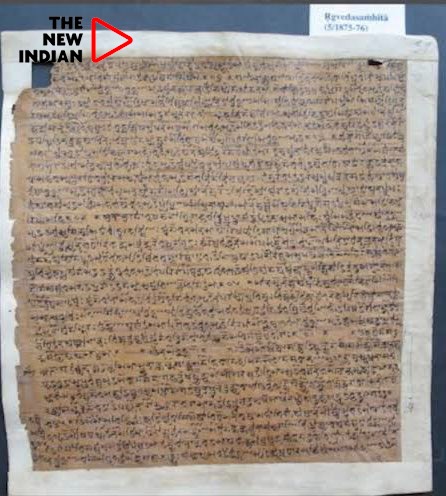

The manuscript will be displayed alongside the original text of Panini’s Ashtadhyayi

NEW DELHI: The rich tapestry of wisdom and ancient Indic philosophy will be for the world to see as the Modi government plans to display a 15th-century Rig Veda manuscript, scripted in the traditional Sharada script from Kashmir, as an “artefact of national importance” at the upcoming G20 Summit in Delhi.
The manuscript, currently in the custody of the Bhandarkar Oriental Research Institute in Pune, will be displayed alongside the original text of Panini’s Ashtadhyayi — a profound treatise on the grammar, phonetics, and syntax of Sanskrit.
The G20 Summit will also feature digital exhibitions of Yoga, Kumbh Mela, Vedic chanting, the time-honored lost wax technique in bronze sculpting, and the exquisite Ikkat Patola weave from Patan, Gujarat.
Participating nations at the G20 Summit have lent artifacts or digital replicas to India for a duration of three to six months. This pioneering endeavor, known as ‘Museum in the Making,’ aligns with India’s inaugural presidency of the G20.
The showcase will span across 3,000 square feet at the Bharat Mandapam and will spotlight an array of treasures, including the American Magna Carta and Freedom Charters, a Fahua lidded jar from China’s Qing dynasty, a digital rendition of the Mona Lisa from the Louvre Museum in France, Germany’s illustrious Gutenberg Bible (the first printed physical book), and a pre-modern kimono antecedent known as the Japanese Kosode.
This museum promises a ‘phygital’ experience, seamlessly blending physical artifacts with digital presentations. The artifacts have been categorized under Object of Cultural Significance, Iconic Cultural Masterpiece, Intangible Cultural Heritage, Natural Heritage, and Artefacts Related to Democratic Practices.
A substantial contribution of Vedic and ancient manuscripts has been provided by the Bhandarkar Oriental Research Institute, renowned for safeguarding texts dating as far back as the ninth century. The institute has meticulously collected and preserved manuscripts in Persian, Marathi, Sanskrit, Urdu, and Arabic, spanning ten different scripts, including Devanagari, Sharada, Grantha, Nast-aliq, Naskh, Oriya, Bengali, Kannada, Telugu, and Tamil.
Among their precious holdings, the institute treasures an ancient manuscript that dates back to 906 AD, transcribed on palm leaves. This legacy reflects the depth and complexity of India’s historical heritage.